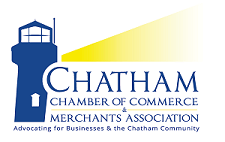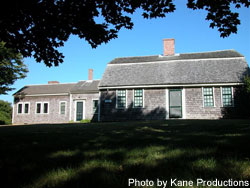
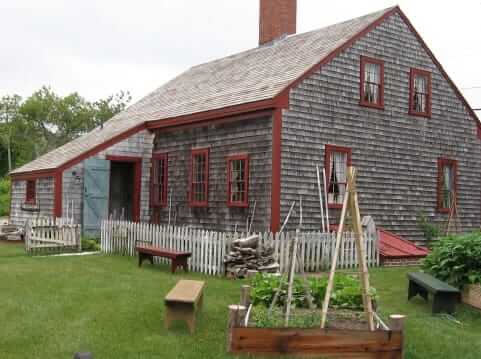
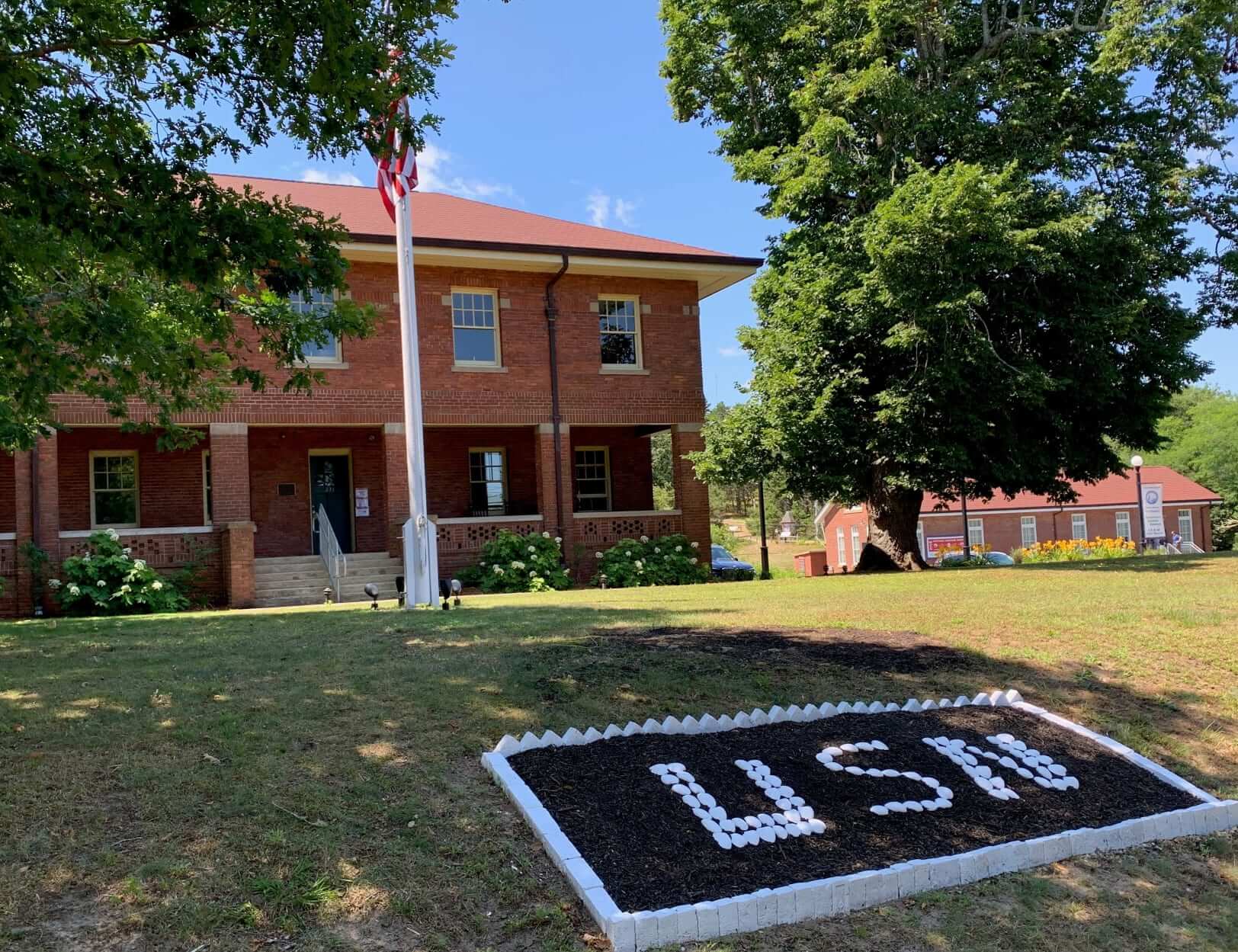
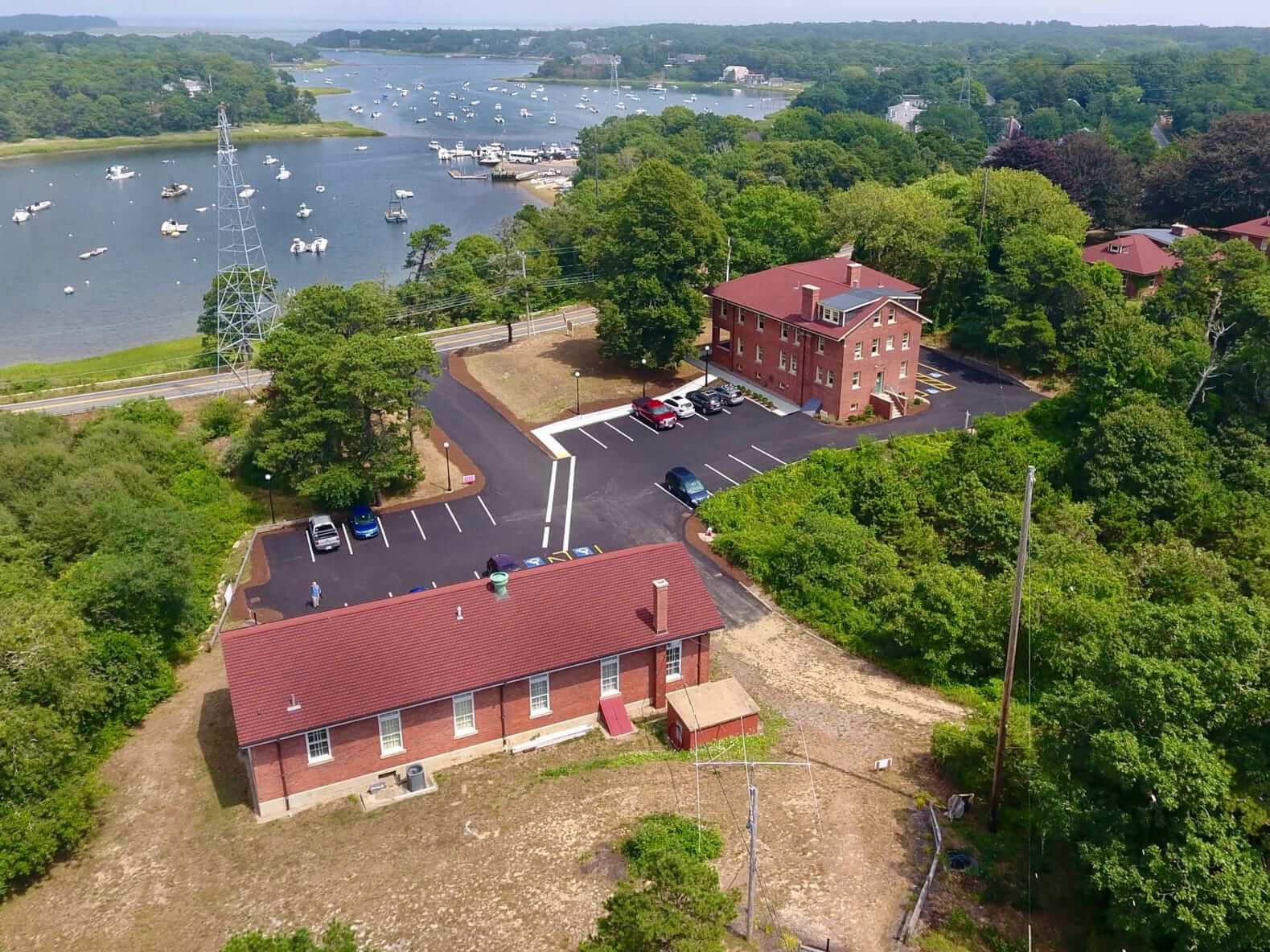
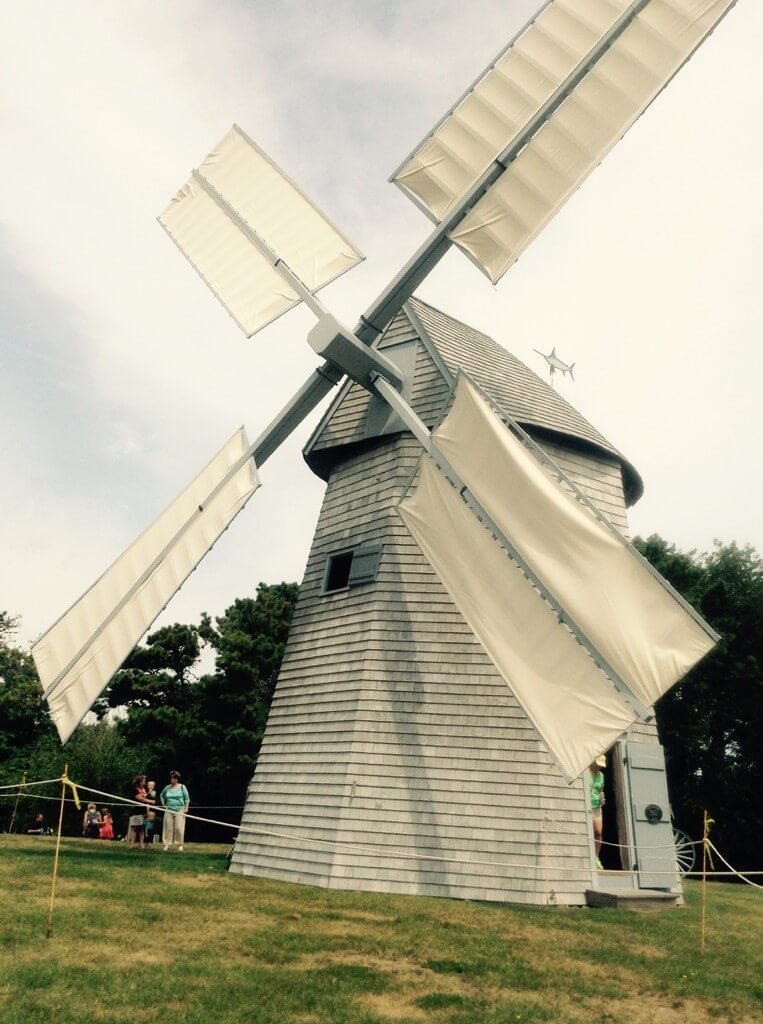
Atwood Museum
Owned and operated by the Chatham Historical Society, the Atwood Museum is located at 347 Stage Harbor Road. The original museum consisted of a house built in the 1750s by sea captain Joseph Atwood when he was a subject of George II of England. The house was occupied by the Atwood family until 1923, and the Historical Society acquired it three years later. As such, it has remained almost entirely unchanged since its original construction. The house provides an excellent view into life during the 18th and 19th centuries in New England.
Over time, several additions were added to the original structure of the Atwood Museum, with the latest expansion occurring between 2003 and 2005. Today there are twelve spacious galleries featuring art, artifacts, maps, charts, and decorative items portraying life on Cape Cod since the 17th century.
In 2025, the museum is excited to announce a new exhibit about the history of immigration on Cape Cod, Coming to These Shores, as well as a new documentary about the life of prolific, Chatham writer, Joseph C. Lincoln. Continuing to be displayed will be the exhibits unveiled in 2024, A Place to Hang Your Hat, the Children’s Activity Room, and In Tune with Chatham.
Coming to These Shores will share with you the story of immigration to Cape Cod. This new exhibit will highlight the diverse array of people who immigrated here in search of better lives, greater freedoms, or to contribute to booming industries like cranberry bogging, whaling, and shell fishing. Coming to These Shores will be located in the old Joseph C. Lincoln gallery to the right of the Portrait Gallery (featuring A Place to Hang Your Hat). This exhibit will remain as a permanent installation for the foreseeable future.
Another exciting addition to our museum in 2025 will be the debut of a New Documentary about the prolific, Chatham author, Joseph C. Lincoln. The documentary is produced by the Chatham Historical Society and will run in our Multimedia Room alongside other documentaries and films available for viewing on a daily basis for all to watch.
A Place to Hang Your Hat will return for another year. This exhibit highlights a beautiful collection of historic hats from our Costumes & Textiles department. Enjoy a variety of women and men’s hats from the early nineteenth century to the late twentieth century. This fun fashion exhibit will lead ladies and gentlemen down memory lane through a recreated Millinery and Haberdashery displaying, hairpins, Mob Caps, Sun Bonnets, Bowlers, Top Hats, and much more.
Entering its second year for visitors of all ages is our Children’s Activity Room. Not your typical exhibit, but a space to help usher in the next generation and their interest in history. This room continues to be place for young children to expand their minds with fun activities. The Children’s Activity Room is chock-full of activities including coloring, blocks, books, and a giant chalkboard to let their creativity flourish. In addition, the room will display a couple of mini exhibits, one on vintage toys and another miniature diorama. We are looking forward to opening this fun, safe place for children and grandchildren, and we invite you to take advantage while visiting the museum.
In Tune with Chatham, a mini exhibit within the Old Atwood House, will also be returning for another year. What better way to highlight the “Music Room” of the Old House than displaying the history of music? The Costumes & Textiles Department takes us on a musical journey that will surely please all visitors. Experience the Atwood Museum’s collection of musical instruments and vintage sheet music, while learning about the local artists who made Cape Cod and Chatham come alive during the Jazz age and beyond.
And of course, we cannot forget our longstanding crowd favorite exhibits that keep museum goers coming back. Come by and be immersed in The Rescue of the Pendleton Exhibit, brave the stormy seas in our Shipping Gallery, learn about the tools of the trade in our Antique Tool Room.
Finally, we cannot forget about two final components of the museum that remain as constants alongside the Old House, the Mural Barn and the Nickerson North Beach Camp.
The Mural Barn houses the nationally renowned portraits of 130 townspeople painted by artist and Chatham resident, Alice Stallknecht, between 1932–1945. These incredible murals capture the life and struggles of local residents during that period.
The preserved Nickerson North Beach Camp stands on the front lawn and on sunny days, is open for any and all visitors. Built in 1947, the structure was moved, with its contents intact, to save it from being washed into the sea as the beach eroded. After visiting the camp, be sure to check out the working lighthouse lantern from one of Chatham’s famed twin lights, together with its original Fresnel lens.
Hundreds of interesting antiques are displayed throughout the museum, providing something for all art lovers, history buffs, students, and friends of Chatham and Cape Cod, regardless of age. Don’t forget to visit our gift shop, which is stocked with items and books relating to the museums’ collections.
As stewards of the region’s history and culture, the Chatham Historical Society strives to educate, inform, and enlighten the public and bring enthusiasm to the Cape Cod community. The Atwood Museum exhibits are open from May to October with special festive happenings during the holidays. The research library and special programs including a monthly lecture series are available year round. For schedules and information, visit the museum website at www.chathamhistoricalsociety.org or call (508) 945-2493.
William and Anne Nickerson Historic Homestead Site
Caleb Nickerson Homestead
Chatham’s c. 1829 Caleb Nickerson Homestead, on the campus of the Nickerson Family Association, 1107 Orleans Road (Route 28), North Chatham, is open for tours in July and August on Wednesdays from 9 to 1; Thursdays from noon to 4; and Fridays from 11 to 2. In June and September the homestead is open on Wednesdays only from 9 to 1. Admission is free but donations are welcome.
Experience Colonial life in the Caleb Nickerson Homestead, an antique full Cape featuring a beehive oven, period woodwork and a Colonial “dooryard” vegetable and herb garden. View an extensive interpreted display of 17th century artifacts found during the excavation of William and Anne’s homestead. Stop by and see what is growing in the garden.
Caleb Nickerson, a seventh generation descendant of William and Anne (Busby) Nickerson, built his full-Cape on Stage Neck Road in about 1829 for his wife Priscilla (Eldredge) and their family. The house stood on a bluff overlooking the Oyster River for 174 years until, in 2003, the house journeyed by land and sea to its present location. The pristine house features three working fireplaces and a beehive oven, original iron cranes, period woodwork and random-width pine floors.
For more information visit www.nickersonassoc.com, call 508-945-6086 or email wmnick1107@gmail.com.
Chatham's Godfrey Windmill
Chatham's Godfrey Windmill is located near Chase Park, off Shattuck place, just a short walk from the downtown Main Street. Built by Colonel Benjamin Godfrey in 1797, the Mill remains almost exactly as it was when it was grinding corn for early Chatham residents. It is a prime example of a post-Revolutionary War commercial venture that served the community for more than one-hundred years.
The Mill originally located overlooking Mill Pond was donated to the Town of Chatham by Mr. and Mrs. Stuart Crocker and moved to its present location in 1956. The Mill was restored for the 300th anniversary of the Town of Chatham in 2012. Today thousands of visitors visit the Mill during the summer season and walk in the steps of many who used the Mill to supply them with corn meal and local gossip. Learn the variety of common phrases that started at the grist mills. Throughout the season a variety of activities related to the Mill will be available for children and adults. www.chathamwindmill.com
Marconi - RCA Wireless Museum
The Marconi-RCA Wireless Museum is located at 847 Orleans Road (Route 28) across from Ryder’s Cove in North Chatham.
In 1914, radio pioneer Guglielmo Marconi’s company built a wireless receiving station here paired with a transmitting station in Marion, Massachusetts intended to provide commercial point-to-point radio service between the United States and Norway. Following World War One and with the intervention of the US government, Marconi’s American assets were acquired by the newly formed Radio Corporation of America. By 1921, RCA’s Chatham station was in full operation, but now for maritime ship-to-shore service with call sign WCC. It would soon become the busiest US coast station. The campus comprising 10 original buildings on 11.3 acres has been preserved by the Town of Chatham as the Marconi-RCA National Register Historic District.
Preserving Maritime Radio History: Through informative panels and interactive displays, visitors explore radio pioneer Guglielmo Marconi’s life and legacy, the role of maritime radio in world events, ship-to-shore communication, and artifacts from Chatham Radio / WCC’s history including the actual shipboard radio from the renowned hospital ship SS Hope. Visitors experience firsthand how a radio operator touching a Morse code key in Chatham could communicate with counterparts aboard ships sailing the seven seas, and learn about the talented and skilled people who conceived, built and operated the station. Chatham Radio/WCC reliably linked high society, royalty, dignitaries, celebrities and humble immigrants to their loved ones and businesses. In the Golden Age of Trans-Atlantic Ocean Liners exhibit, visitors see what it was like to sail aboard any of six memorable 20th century passenger ships such as the SS United States, famous people they might have met, and historical events they might have witnessed.
Chatham Radio played a crucial role in winning World War II’s Battle of the Atlantic. From 1942 through victory in 1945 it became the U.S. Navy’s top secret Station C, covertly intercepting encrypted wireless messages from enemy ships all across the Atlantic. Station C forwarded these intercepts to Washington, D.C. for decoding, and alerted the Navy’s extensive radio direction-finding network to locate and track enemy U-boats. In a new exhibit marking the 80th Anniversary, Can You Keep A Really Big Secret? explores this tense period in the nation’s history and the changes it brought to everyday life when Chatham became a wartime “Navy town.”
The Antenna Field Trail, the museum’s outdoor gallery, is open year-round during daylight hours. It is a winding path through the flora and fauna of Cape Cod with interpretive signs describing the station’s antennas and history. Some of the antennas are scaled replicas of the originals, actively used today by the museum’s amateur radio operators to communicate around the world.
The indoor exhibits and Museum Shop are open most days from mid-June until mid-October and on Spring and Fall weekends. Interpretive lectures and presentations provide context for the museum’s exhibits. A Summer STEM program offers engaging science, technology, engineering & mathematics classes for youth. For information on museum hours, programs, classes and events please visit ChathamMarconi.org or call 508-945-8889.
Mayo House
Just east of the Cape Cod Five Cents Savings Bank building at 540 Main Street is the Mayo House, which is an excellent example of a traditional Cape Cod house built in 1820. This antique home serves as headquarters for the Chatham Conservation Foundation, and is used by the group for its regular meetings. The Mayo House, beautifully preserved and restored, was donated to the foundation by the Cape Cod Five Cents Savings Bank. It is furnished with period furniture and is open to the publicthree days a week from 1:00pm to 3:00pm during the summer months.
Chatham Railroad Museum
The Chatham Railroad Museum is located in the old Chatham Railroad Company station on Depot Road, and has parking space at the door. The building is now over 100 years old and on the original site. It served the Town for over fifty years from 1887 to 1937. In 1951, Mrs. Jacob Cox of Cleveland, Ohio and Chatham purchased the structure and land as a gift to our town. It was restored as a country depot and a museum in 1960.
The Chatham Railroad Museum opens Tuesday thru Saturday from 10:00am to 4:00pm mid-June through mid September. It is manned by an experienced group of volunteers from all Cape Cod. There have been over 100,000 visitors since the first season. It grows in size each year. The exhibits, starting with a relic of the first commercial railroad in the U.S. in 1826, include hundreds of factors of historical significance in the railroad field, plus models and objects which never fail to interest the visitors.
The 100-year old caboose of olden days, the gift of the New York Central System, has been fully restored and is open for all to enjoy the sounds of the rails. Young and old will enjoy the trip through this Home on Wheels of the railroad train crews. The diorama of the Chatham yards of about 1915 modeled in a scale of 1/8 inch to the foot is a new acquisition - a must see exhibit. Museum can be opened after season closing for groups by special arrangements. Donations are accepted. Handicapped accessible.
